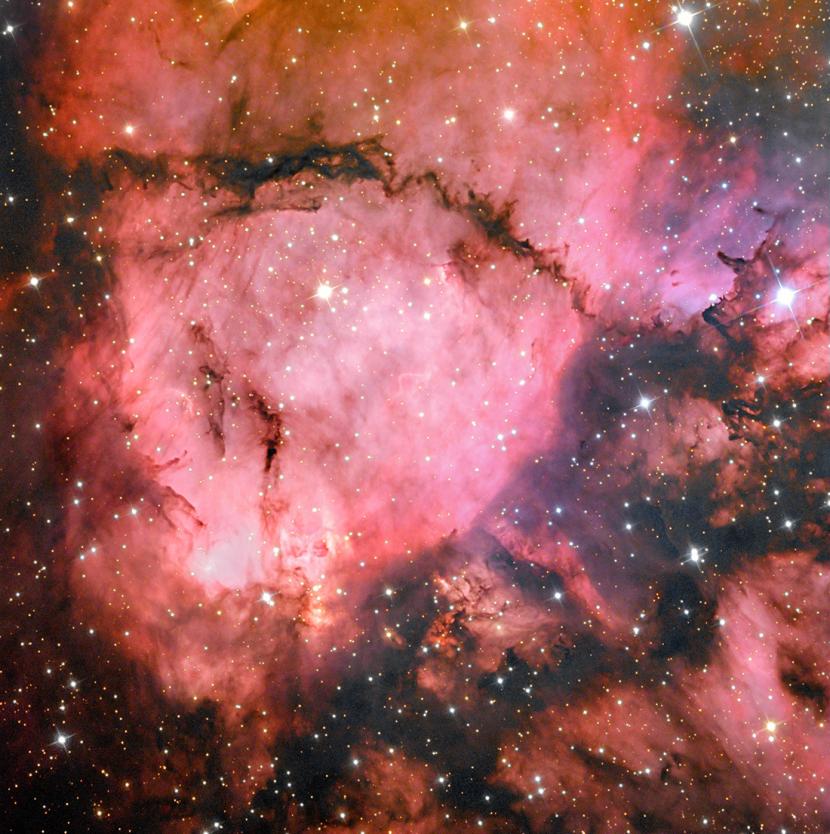

This star-forming region has a wonderful mix of nebulae, including emission and dark nebulae. It, along with the larger complex, goes by many names, from the Heart Nebula, the Soul Nebula, the Heart and Soul Nebula, to Sh2-190. In a stunning image by Adam Block (from the Mount Lemmon SkyCenter), one particular section of the nebula is featured—known as NGC 896 (or IC 1795).
Found approximately 7,500 light-years from Earth toward the Cassiopeia constellation, NGC 896 is one of the brightest parts of the Heart Nebula, and the first that was independently discovered. It is powered by an open cluster of stars; some happen to be around 50 times larger than our Sun. Conversely, some are on the lighter side, weighing around the same size as the Sun, or a little less. (The whole lot is called Melotte 15)
These stars help sculpt the nebula into the dynamic stellar nursery we see here. Emission nebulae are most prominent, within them the ultraviolet radiation from embedded stars has carved caverns into the gaseous material. It also has an energizing effect on the gas, which is represented in red.
Ultimately, NGC 896 can be found on the tail-end of the Heart nebula. The Soul Nebula is a bit farther southeast.

(See a larger image here)